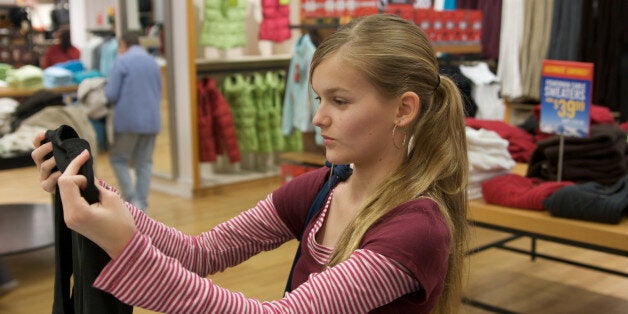

Fast Fashion is Big Business.
There is some serious money to be made meeting the seemingly insatiable demand of consumers in the developed world for cheap clothes.
This demand for cheaper and cheaper clothes means that corners are cut at every level of the supply chain as retailers and manufacturers strive to cut prices, while still maintaining their bottom line. Inevitably it is the people at the bottom of this long and complicated supply chain that are suffering. People working long days in often dangerous conditions for less than a living wage. Children working picking cotton, or sewing on buttons by hand. Mothers leaving their kids home alone so that they can scrape together enough money to put food on the table.
And it's not just the fashion workers who are paying for our desire for ever cheaper clothes, the planet is suffering too. The fashion industry is the second most polluting industry on the planet. Only the oil industry does more damage.
I think on some level we all kind of know this. But it can feel as though as an individual consumer we are powerless in the face of such huge challenges. What can we do? Sure we can write letters and sign online petitions, but does it actually change anything?
Sadly, probably not.
The whole time there is a demand for cheap clothes, and there is money to be made, manufacturers and retailers will continue to look for ways to cut their margins and increase their profits.
And that's were we come in.
As consumers we have power.
Everytime we open our purses, we are making a choice. A choice for the kind of world we want to see. The kind of world we want our kids to grow up in.
Everytime we buy a £3 t-shirt, or a £5 pair of jeans, we are telling the retailers that that is what we want. That we want cheap clothes, and that we don't care where they've come from, or who made them. As harsh as it might sound, we are saying that we care more about what we are wearing, than we do about someone else's kids having to work in a factory, or a cotton field, instead of going to school.
And I don't think any of us really do.
It's just that we are so far removed from the production and manufacture of the things that we buy, that we've all kind of forgotten that someone somewhere had to make them. And that the price on the ticket not only has to have bought the raw materials, but paid someone to make it.
There's such an easy work around for this: Buy secondhand.
Partly because of the rise of fast fashion, there is an abundance of pre-loved clothes out there, to the extent that our charity shops are now overwhelmed by clothing donations. If you want a fast fashion fix without the side order of slave labour or child exploitation, then secondhand is the way forwards.
Here's five top tips for getting your fashion fix, secondhand:
1) Get to know your local charity shops
Some will specialise in clothes, others in electrical items. Some resemble jumble sales, whilst others have all their clothes sorted by colour and hanging on wooden hangers. Knowing which ones suit your style means you can ear mark them for popping into each time you are passing.
2) Location matters
Charity shops in more affluent areas will often have higher end clothes and labels. So if you are looking for something special, then it might be worth making a trip.
3) Look online
Oxfam have a great online fashion site where they list all of their 'best' donations as well as some fabulous vintage and retro pieces.
And if you are after a particular brand, then eBay can be a great place to look as you can search for brands and even narrow it down to sizes and styles.
4) Get Swishing
A swish is basically a clothes swap, and is a great way to refresh your wardrobe for little or no money. Check out Swishing.com to see if there is one near you, or failing that get together with a few friends and organise your own.
5) Borrow, don't buy
If you have a posh event coming up and feel the need for a new frock, then have a look at hiring one instead of buying. This article here has some great recommendations for sites to check out.
As consumers, we all have the power to create change. We can all be activists, gently shaking the world. Simply by making more thoughtful choices, everyday.
This September The Huffington Post UK Style is focusing on all things sustainable, for the second year running. Our thirst for fast fashion is dramatically impacting the environment and the lives of thousands of workers in a negative way. Our aim is to raise awareness of this zeitgeist issue and champion brands and people working to make the fashion industry a more ethical place.
We'll be sharing stories and blogs with the hashtag #SustainableFashion and we'd like you to do the same. If you'd like to use our blogging platform to share your story, email ukblogteam@huffingtonpost.com
